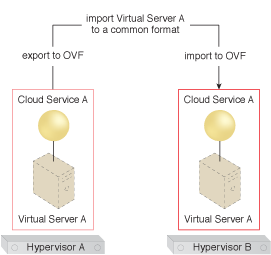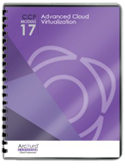Cloud Computing Patterns, Mechanisms > Virtual Server and Hypervisor Connectivity and Management Patterns > Cross-Hypervisor Workload Mobility
Cross-Hypervisor Workload Mobility (Erl, Naserpour)
How can virtual servers be moved between hypervisors of varying brands and models across different environments?

Problem
Virtual servers need to be moved between different models and/or different brands of hypervisors within or across different environments.
Solution
The virtual server is converted and/or exported into a common, supported format that is imported into the destination hypervisor.
Application
The OVF format is the most commonly used and supported format for virtual server exporting and importing.
Mechanisms
Cloud Storage Device, Hypervisor, Live VM Migration, Physical Uplink, Virtual Appliance, Virtual CPU, Virtual Disk, Virtual Infrastructure Manager, Virtual Network, Virtual Server Snapshot, Virtual Server State Manager, Virtual Switch
Compound Patterns
Burst In, Burst Out to Private Cloud, Burst Out to Public Cloud, Cloud Authentication, Cloud Balancing, Elastic Environment, Infrastructure-as-a-Service (IaaS), Isolated Trust Boundary, Multitenant Environment, Platform-as-a-Service (PaaS), Private Cloud, Public Cloud, Resilient Environment, Resource Workload Management, Secure Burst Out to Private Cloud/Public Cloud, Software-as-a-Service (SaaS)

Virtual Server A is exported to an OVF package at the origin hypervisor, and then imported from the OVF package to the destination hypervisor.

Virtual Server A is exported into an OVF package at Cloud A, and then imported from the OVF package into Cloud B.

The six steps involved in the application of the Cross-Hypervisor Workload Mobility pattern.
This pattern is covered in CCP Module 17: Advanced Cloud Virtualization.
For more information regarding the Cloud Certified Professional (CCP) curriculum, visit www.arcitura.com/ccp.
